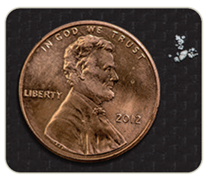What is Fentanyl?
Fentanyl is a strong synthetic drug that is one hundred times stronger than morphine. It is approved by the Food and Drug Administration as a pain reliever. Common street names include Jackpot, King Ivory, and Dance Fever just to name a few. Fentanyl is classified as a Schedule II narcotic which means it has medical uses but has a high potential for abuse and addiction. Just two milligrams of fentanyl can cause death.
How is Fentanyl abused?
Fentanyl is obtained through theft of prescriptions, fraudulent prescriptions, and illicit distribution by patients and medical professionals. It can then be injected, snorted, smoked, taken orally, or by a patch placed on the skin.
What does Fentanyl look like?
Prescribed fentanyl comes in pills, transmucosal lozenges or “lollipops,” nasal sprays, and patches. Chemically produced fentanyl comes in a powdered form or is pressed into tablets for oral consumption. It can be sold alone or mixed in with other drugs such as heroin and cocaine making it difficult to identify.
What does Fentanyl do to the body?
Fentanyl’s prescribed use is a pain reliever; however, it can cause confusion, drowsiness, dizziness, nausea and vomiting, urinary retention, pupillary constriction (decreases the size of the pupil), and respiratory depression (inability of the body to take enough breaths).
What does an overdose look like?
A fentanyl overdose can cause cold and clammy skin, changes in pupil size, blue skin and lips, coma, and respiratory failure that can lead to death.
What to do in the case of a suspected overdose?
If you suspect a drug overdose, call 911 immediately. Paramedics and Helena Police Department Officers carry Narcan which can quickly reverse the effects of fentanyl and potentially save a life.
Sources: www.dea.gov/sites/default/files/2020-06/Fentanyl-2020_0.pdfleg.mt.gov/content/publications/fiscal/2023-Interim/IBC-D/DOJ-Fentanyl-Summary-2021.pdf.
